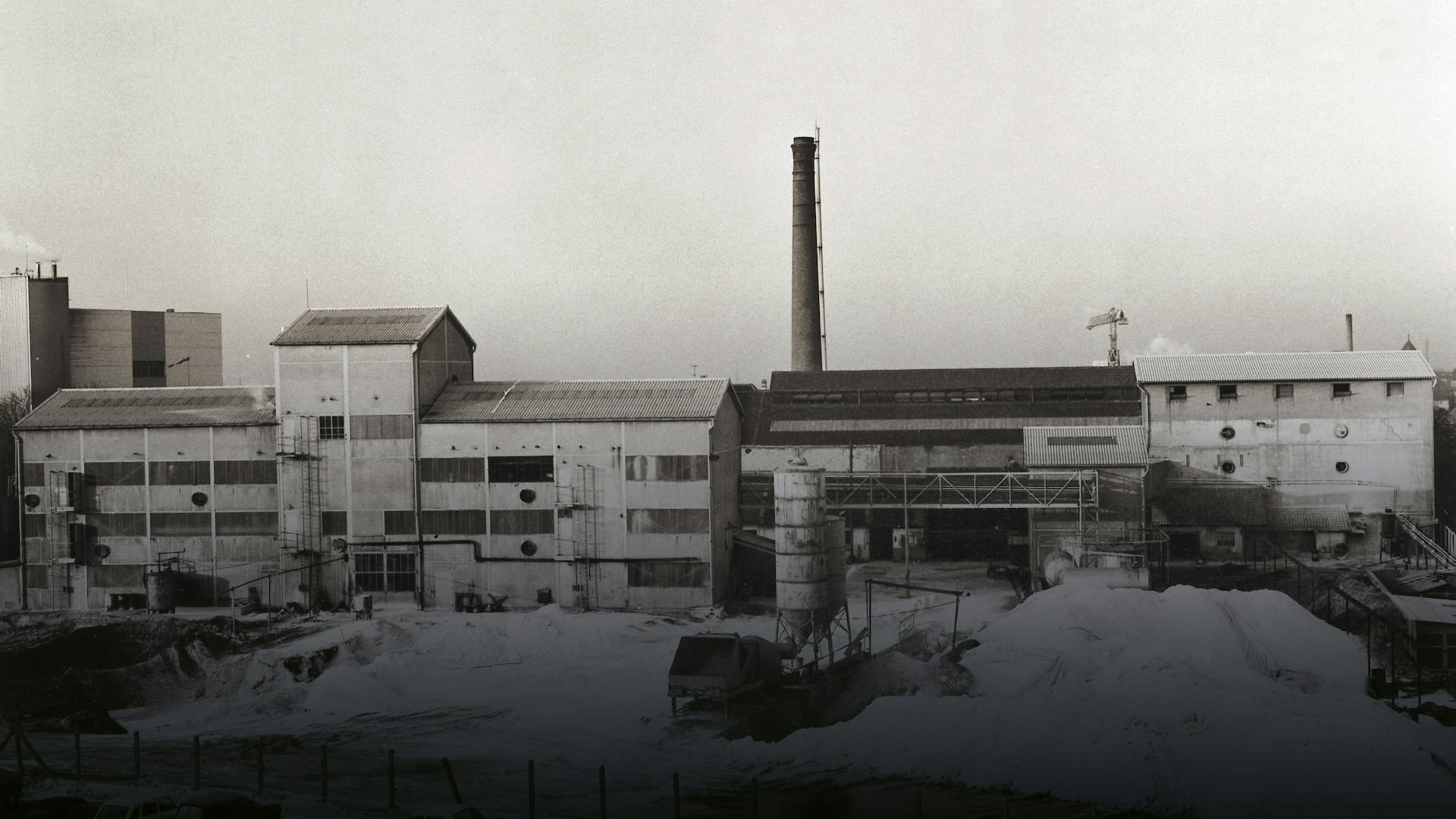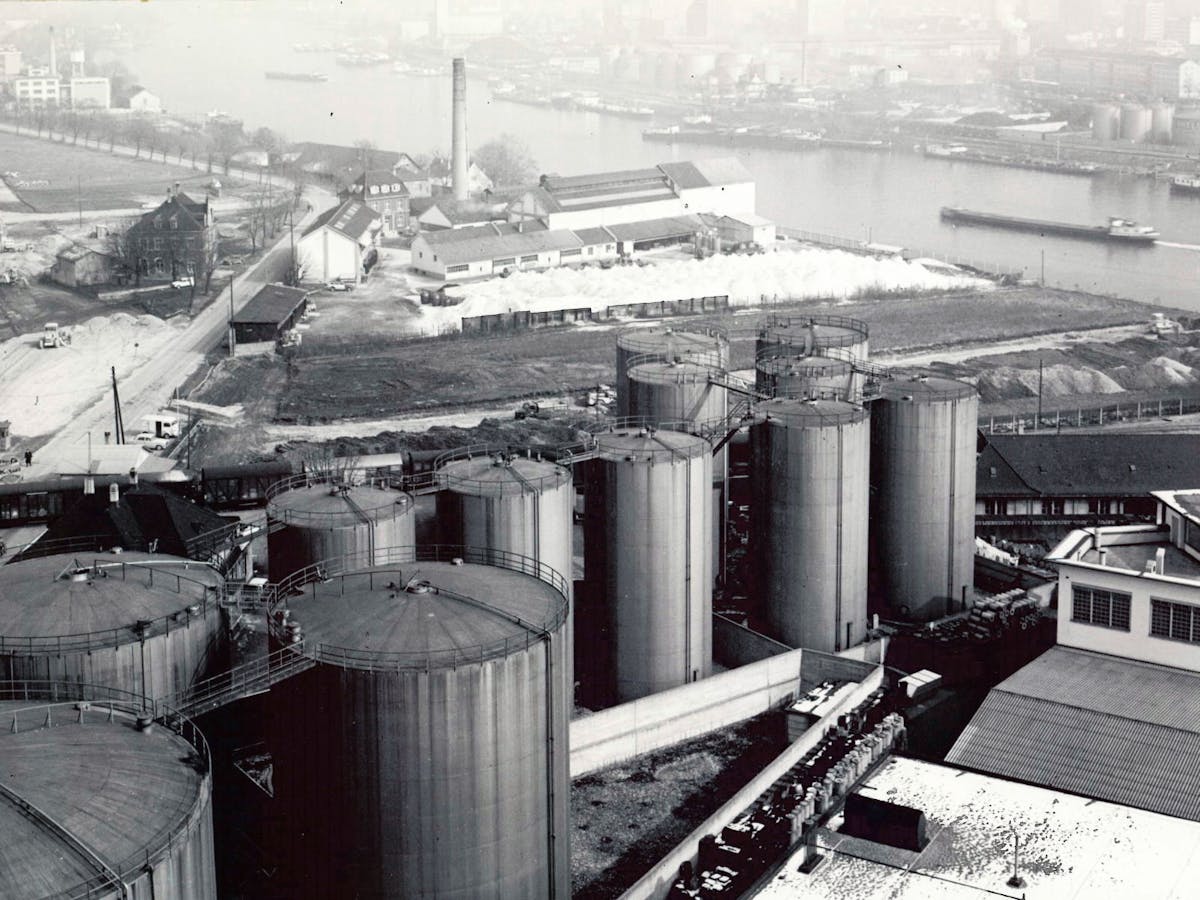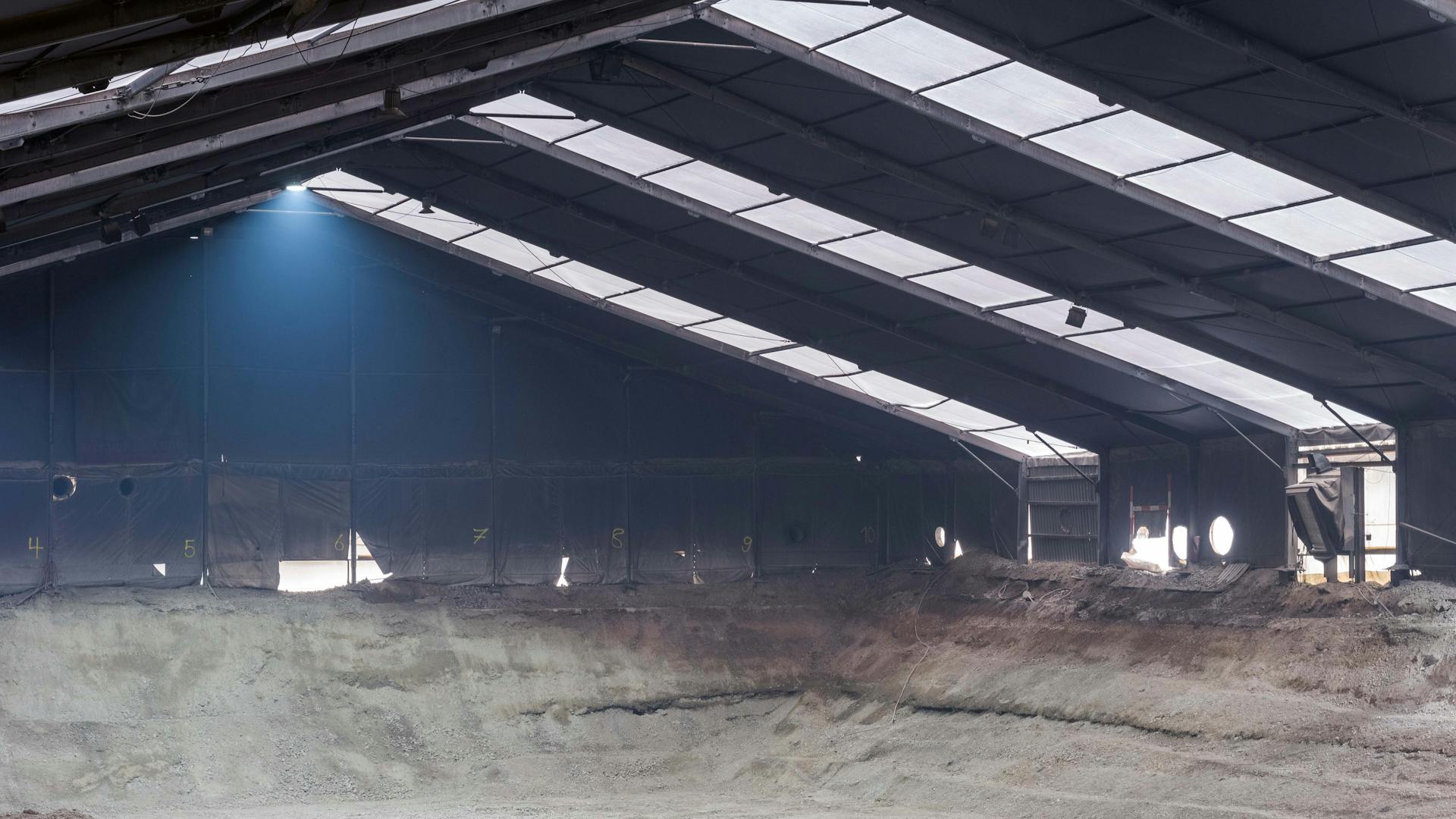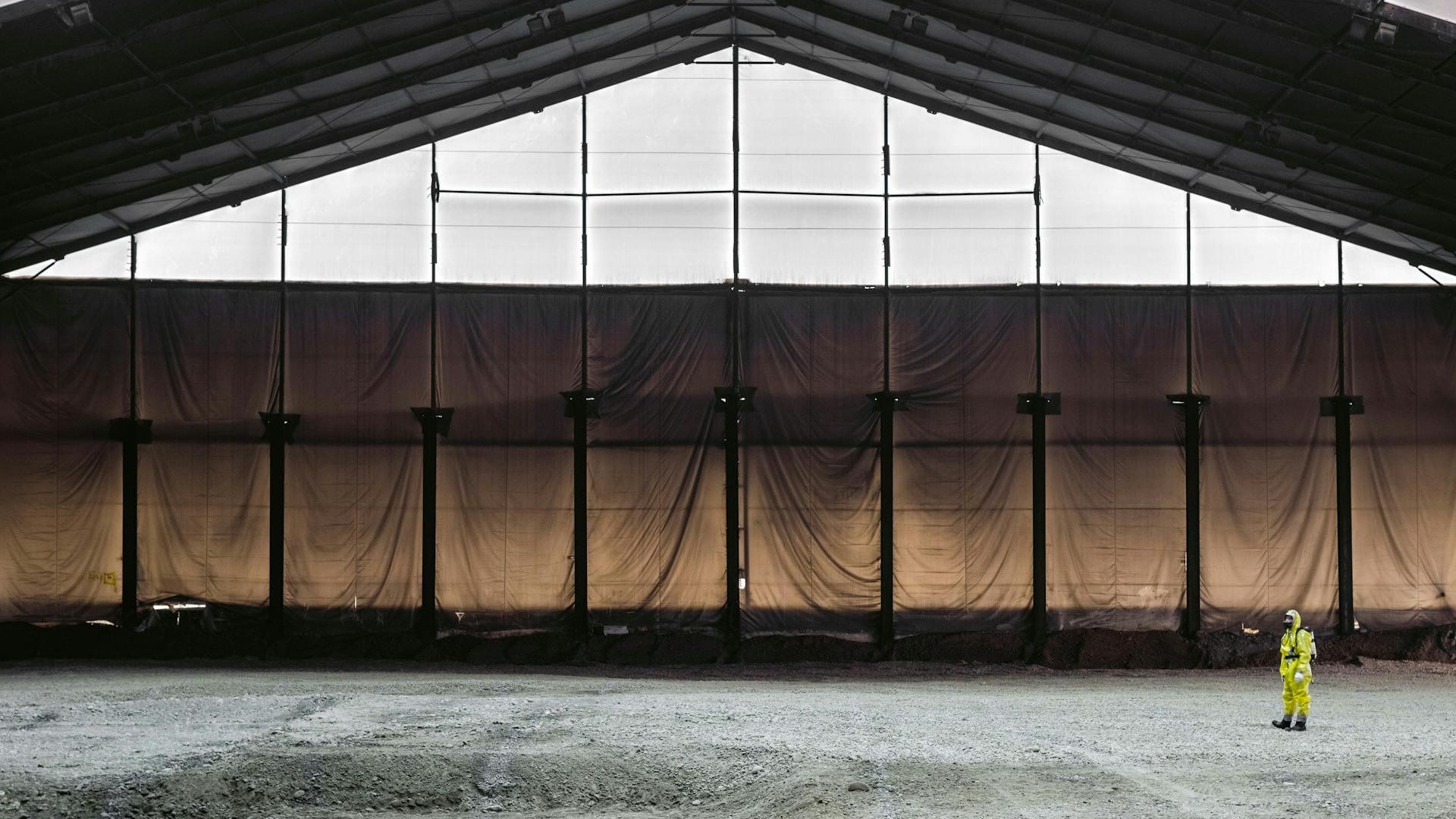
View of the Ugine Kuhlmann production site in Huningue.
Published on 01/07/2021
1947
Produits Chimiques Ugine Kuhlmann (PCUK) commences production of lindane, hexachlorocyclohexane (HCH).
1950s
“Hexa-potatoes” effect noted by the “Journal of Agricultural Research and others”, leading to a production change creating more HCH waste.
1973
Sandoz acquires the site.
1974
Ugine Kuhlmann stops production of lindane. A 2,500-square meter pit with a depth of 4 meters is excavated on the site to dump HCH waste, which is covered by a layer of asphalt and later serves as a parking lot. Groundwater monitoring starts.
1976
The former Ugine Kuhlmann plant is demolished.
1978
Construction begins on the industrial wastewater treatment plant (STEIH). During construction, extensive amounts of soil are moved and used as backfill across the site, dispersing HCH-contaminated soil.
1981
Industrial wastewater treatment is put into operation.
1992
A hydrological and hydrochemical study is carried out by the Bureau de recherches géologiques et minières (BRGM).
1994, 1995
Additional investigations are conducted by the Antea consultancy to locate the sources of the contaminated groundwater.
February 1996
A report from the Regional Directorate for Industry, Research and the Environment (Direction régionale de l’industrie, de la recherche et de l’environnement, DRIRE) highlighting groundwater pollution is sent to the Prefect of the Upper Rhine.
June 1996
The Prefect of the Upper Rhine issues an order stating that the existence of residual deposits of HCH waste is likely to damage the soil and subsoil and that Ugine Kuhlmann must be considered responsible for the pollution.
September 1996
As ordered by the administration, the wastewater treatment operator submits a report describing the means of containment of the HCH pit.
December 23, 1996
Ugine Kuhlmann goes into liquidation.
March 25, 1997
An order is issued to the liquidator of Ugine Kuhlmann to carry out containment work at the Huningue site.
1999 and 2000
The Prefect of the Upper Rhine requests funds from the French Environment and Energy Management Agency (Agence de l’environnement et de la maîtrise de l’énergie, ADEME) to ensure the groundwater is monitored for a period of two years.









